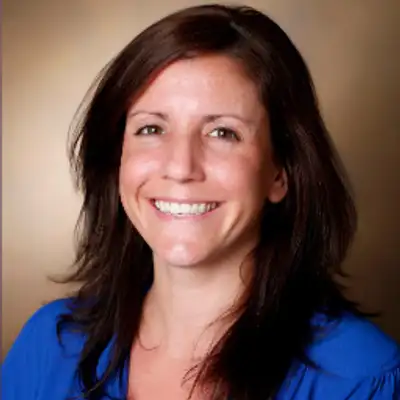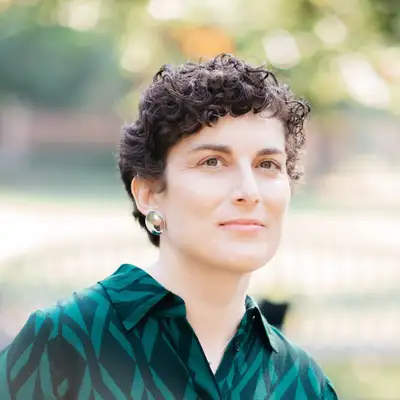Will the victor be Diagnosis and Treatment of Preeclampsia, or Risk Factors, Prevention, and Long-Term Sequelae in Preeclampsia? Learn more at ajkdblog.org and submit your picks at nephmadness.com by March 31!
Creators and Guests



What is GN in Ten?
A bite-size podcast brought to you by the International Society of Glomerular Disease. Nephrologists and glomerular disease experts Dr. Kenar Jhaveri (Northwell Health/Hofstra University) and Dr. Koyal Jain (UNC Chapel Hill) take a lighthearted look at the latest research, discuss clinical practice, and interview leaders in glomerular medicine — all in a short enough time to listen on your coffee break.
Laurel Damashek: [00:00:00] Welcome to GN in Ten, a bite sized podcast brought to you by the International Society of Glomerular Disease. Our hosts are nephrologists and glomerular disease experts Dr. Kenar Jhaveri of Northwell Health and Hofstra University on Long Island, New York, and Dr. Koyal Jain from the University of North Carolina Chapel Hill.
Koyal Jain: Hi, everybody. Welcome to this special episode of GN in Ten with your co host Kenar Jhaveri and Koyal Jain.
We are so lucky and privileged to have Dr. Anna Burgner with us joining today. Dr. Burgner is the Nephrology Fellowship Program Director at Vanderbilt. Thank you so much for joining us.
Anna Burgner: I'm so happy to be here. Thank you for having me.
Koyal Jain: Of course. Do you mind telling our listeners a little bit about yourself?
Kenar Jhaveri: But also Koyal, you want to tell them that this is a NephMadness episode, right? This is a special month.
Koyal Jain: Oh, yes. Dr. Jhaveri has let the cat out of the bag. That's the saying, right? I always get the sayings wrong.
Kenar Jhaveri: No, you [00:01:00] can change the animal if you want. Some people are dog lovers. It's okay.
Koyal Jain: Sounds good. Yes, this is a special NephMadness episode.
For people who do not know this, Dr. Burgner is the one who came up with the name GN in Ten in one of her ISGD meetings.
So Dr. Burgner, tell us about yourself.
Anna Burgner: So I'm a NephMadness executive member, which means that every year I get to help design NephMadness for the whole entire world to enjoy. I am, as you said, the program director for the Nephrology Fellowship Program at Vanderbilt. I have a huge interest in education.
And another one of my big clinical interests is in women's health nephrology where I see a good portion of pregnant women with CKD in my clinic at Vanderbilt.
Kenar Jhaveri: It's good to see NephMadness enter its 11th year, correct?
Anna Burgner: 12!
Kenar Jhaveri: 12th. Oh wow. I still remember the call I got when I was the AJKD blog editor on that December [00:02:00] about doing this. And I'm like, are you kidding me? It's going to really work? And it did. And it was just amazing to have this now, flourish for so many years.
Anna Burgner: Yes, it's such an exciting month, the month of March, thanks to the great brain power and idea from Matt Sparks and Joel Topf to get this going.
Koyal Jain: I entered the NephMadness game a little bit late and really had a hard time wrapping my head around themes, concepts. I finally understand it, but I'm sure there's some listeners who may not know.
Kenar Jhaveri: It took an hour of tutorial yesterday.
Koyal Jain: In all honesty, I called Dr. Jhaveri yesterday and I said, can you please tell me a bit more about NephMadness in the sense, how do we decide as to what wins?
Anna Burgner: It's a struggle because a lot of people are not basketball fans, right? So NephMadness was based upon the U. S. 's NCAA March Madness. And if you don't have a good understanding of what that basketball tournament is, it can be daunting to try to begin to understand [00:03:00] what NephMadness is.
But basically, every year what we do is we choose hot, exciting new things going on in the nephrology world, different topics. And we create educational scouting reports, so to speak, about each of these topics and they're really just short evidence based reviews, which we release to the public March 1st for everyone to be able to read and think about
which topic is really the most important, what's going to be the most important in nephrology over the next five years. And we have a blue ribbon panel that actually decides which topic wins. There are nine nephrologists from around the world and they have such a huge undertaking of having to decide who wins NephMadness every year.
And they have to have very thick skin because a lot of people don't end up agreeing with their choices.
Kenar Jhaveri: You know, There are copycats. There's Onc Madness [00:04:00] now. There's Hep Madness. There's Rheum Madness. Yeah, NephMadness was the
Anna Burgner: first.
We were first.
Koyal Jain: And we actually have a NephMadness party. Two of our faculty members get everybody together, fellows together, and we all decide on brackets and put in a UNC bracket. We haven't won that yet, it's exciting.
Anna Burgner: If you are new to NephMadness and haven't participated before, the first step is to go to AJKDblog. org. During the month of March, the AJKD blog site completely transforms to be all NephMadness. So it's a great place to start to read the scouting reports. Check out what the bracket looks like.
And then from there, if you go to nephmadness. com, you can input your brackets so that you have a chance of winning the glorious title of being NephMadness Champion for the year.
Kenar Jhaveri: So this category is preeclampsia, I understand, and you're going to tell us a little bit about this category and then Koyal and I need to figure out who's going to be the winner in [00:05:00] this category.
Anna Burgner: In this year's preeclampsia region we talk about the most common glomerular disorder in the world, preeclampsia. And it is certainly more than just a kidney disease, but it is a significant kidney disease as well. For those who maybe are new to preeclampsia or who try to avoid the OB ward at all costs it's a multi system progressive disorder defined as new onset hypertension that's accompanied either by new onset proteinuria or other end organ damage such as thrombocytopenia, liver dysfunction, new kidney dysfunction, or new onset cerebral or visual disturbances that occur after 20 weeks gestation. It is really important for us as nephrologists to understand this because women with CKD have a very high risk of developing preeclampsia during pregnancy, and that [00:06:00] risk increases as the degree of CKD worsens. In addition, our patients with glomerular nephritis, like lupus nephritis, have a very high risk of preeclampsia as well.
So it's really important for us to be able to discuss the risk of preeclampsia with our patients and understand how to modify the risks as much as possible.
Kenar Jhaveri: Every time you talk about the glomerulus, it excites Koyal and I. And the fact that you've mentioned this is a glomerular disease, and it's actually the most common, more than IGA. I think that's a take home message. And it's important to OB folks to understand this is a renal disease primarily. Is it fair to say that in the current day and age, this would have been named just TMA in the pregnant patient or endothelin injury in the pregnant patient?
Because back then people didn't know enough and they called it HELLP Syndrome and all these fancy terms. But if you look at it now, isn't this just endothelin injury?
Anna Burgner: I think [00:07:00] you're absolutely correct as they've renamed a lot of the TMAs already. I'm surprised this has not been renamed TMA of Pregnancy Origin.
Koyal Jain: So Dr. Burgner, this is a hard ask, right? You have to figure out this is an important disease. There's two sides to this, I understand, right? The diagnosis portion of preeclampsia and then the long term sequelae and the prevention of preeclampsia.
And those are the two regions. I know you're going to ask Dr. Jhaveri and I to answer which one and debate about it. What is your thought?
Anna Burgner: Oh, geez, putting me on the spot. Which team should win this region? So on one hand, we have the ability to diagnose women with preeclampsia, which can be very hard in our patients with CKD, particularly if they already have hypertension and proteinuria can be very difficult to tease out.
Do they actually have preeclampsia? Is this lupus nephritis flaring? [00:08:00] Is this something else going on? And excitingly in the United States for the first time, we have a test available to help us differentiate between is this preeclampsia or something else. Referring to the soluble FMS like tyrosine kinase one to placental growth factor ratio, or sFLT-1 to placental growth factor ratio. So it's very exciting to actually have a test available to help us differentiate.
And then on the other side there is increasing knowledge about how to prevent preeclampsia and hopefully prevent the long term sequelae that these women that develop preeclampsia are at risk for developing, which includes development of CKD and end stage renal disease, as well as heart disease and many other things.
So it's really hard for me to choose. So I'm just going to make you choose which the most likely to win.
Kenar Jhaveri: I like the whole concept of preeclampsia because I'm also [00:09:00] an onconephrologist. And I remember reading the first report of Avastin or Bevacizumab induced tMA in the kidney, they titled it preeclampsia in a man because the biopsy findings were exactly the same and the pathophysiology is very similar because the vascular endothelial growth factor, VEGF, it plays a key role here and that was inhibited.
And you inhibit that, you actually get endothelin injury. It turns out that is a major player in preeclampsia. And there were even trials where they did VEGF infusions in rats that actually helped preeclampsia. And that turned out that the reason that was happening is because you had these soluble tyrosine kinase, sFLT-1, basically causing a lot of that. this ratio might be the diagnostic clue telling us if it's preeclampsia versus lupus nephritis versus just hypertension or pregnancy and not true endothelin injury because if it's true endothelin injury, maybe we should be doing exactly what, you know, you should be doing which is [00:10:00] delivering and so forth.
As opposed to lupus nephritis where the treatment can be started with steroids and so forth in some patients. So I think it's so key that the diagnosis is important in our pregnant patients and we give this diagnosis early. To have this test out there for us because no proteinuria, no hematuria, nothing, not even like the high end urinalysis scopes can tell us the difference between these two disorders.
A biopsy is such a high risk in this population, and even a biopsy sometimes. might show TMA, and lupus too. So how are we going to know if this is from preeclampsia or lupus or APLS? The biopsy is still endothelin injury, but maybe that ratio is the real clue here. Now I don't know if this ratio is also elevated in lupus patients.
Anna Burgner: There's actually a very small study that's been done in patients with lupus. They looked at, I think it was 71 women with lupus . And they were all pregnant, they all had lupus. 41 of them had lupus that was [00:11:00] quiescent, 15 of them had active lupus nephritis, and 15 of them had preeclampsia.
And interestingly the ratios were significantly different in this very small cohort of patients, but the sFLT-1 to placental growth factor ratio was significantly higher in the women with preeclampsia compared to the others that were studied. So certainly more study needs to be done in this area, but it does look promising.
Kenar Jhaveri: What about CKD and dialysis? Is there clearance issues?
Anna Burgner: So, there are only really case reports when it comes to dialysis patients and looking at the ratio. And the ratio actually doesn't change between pre dialysis and post dialysis, but the individual levels themselves of the sFLT-1 and placental growth factor increase significantly when you measure them immediately post hemodialysis, but fortunately [00:12:00] it's in a similar ratio as compared to pre hemodialysis.
So you don't have to worry as much about when you measure them. In CKD, there is an issue because placental growth factor is removed from the body by the kidneys. It's excreted by the kidneys. And in a small study, placental growth factor levels were able to predict early delivery due to preeclampsia in women with CKD stages 1 to 2 pretty well, but it didn't perform as well in women with CKD stages 3 to 5.
And then when they looked at the soluble FLT1 to placental growth factor ratio itself it was not able to predict the development of superimposed preeclampsia in this group.
Koyal Jain: It sounds like Dr. Jhaveri, Kenar, you're in the diagnosis camp.
Kenar Jhaveri: Before you go to your side, I think the diagnosis can also become [00:13:00] therapeutic because the angiogenesis disbalance that you guys have now discovered in the preeclampsia world can lead to therapeutic ligands against, say, sFLT-1, and really change the course of preeclampsia.
So I think the diagnosis leads to therapeutics eventually in the future. So it wins.
Koyal Jain: I will say that I'm so conflicted and I'm going to fail in this game because I partly agree with I do think diagnosis is important for treatment, but the reason I think diagnosis is important for therapeutic is because then it prevents it in the long term and it prevents long term sequelae, right?
What is our end goal here, right? It's the end goal for every patient is not just to treat the disease, it's to prevent morbidity to happen in the future. And so we keep talking about CKD population, ESRD population, hypertension in this group. We're trying to prevent all of that. So if we can treat it and we can then prevent the long term sequelae, I think becomes really important.
There was some data Dr. Burgner, you had [00:14:00] mentioned elsewhere, is that about 70, 000 maternal deaths happen as a result of preeclampsia and 500, 000 fetal deaths per year worldwide. That's a huge amount of mortality, right? How can we prevent that from happening?
And I do think that, I agree with you, right? Preeclampsia is a disease that affects the kidneys, right? This is a renal problem. But I do think the OBGYNs still play a huge role in diagnosing these patients and then consulting us once they, us once they, you know, sort of figure out a trigger or something's abnormal.
But I do think that it's the nephrologists who really play a key role in preventing the disease from happening in the future, right? I know that we don't really have a lot of treatment options there, but we can truly prevent development of CKD, worsening hypertension in these patients, and even mortality.
Kenar Jhaveri: So I think the diagnosis wins.
Koyal Jain: Wait, I do not think that's the conclusion we came to. think we [00:15:00] pretty much decided prevention of mortality, CKD, and end stage kidney disease is really And diagnosis is just a stepping stone to that.
Anna Burgner: Yeah, I think if we can prevent patients from developing preeclampsia and then all of the long term sequelae, we are decreasing the number of new patients with kidney disease and heart disease and it's a big win. It's a big win.
Koyal Jain: Dr. Jhaveri, I think she just agreed with my camp.
Kenar Jhaveri: I still think diagnosis will take the top of this. I think the Blue Ribbon panel will speak to my favor.
Koyal Jain: We'll find out this month of March.
Anna Burgner: Yeah, so the Blue Ribbon Panel matchups will start being released April 2nd. So early in April, we'll start releasing the results of each of the matchups and we will see what the Blue Ribbon Panel picked. I do think no matter which team wins this region, That [00:16:00] whichever team wins this region is going to the final matchup .
They'll be in the final game and may win the entire NephMadness. We'll see it's such an important area in nephrology..
Kenar Jhaveri: There's some amazing advances in the preeclampsia treatment, or at least the hypertension component, especially the CHAP trial, right?
Anna Burgner: Yeah, it was New England Journal of Medicine in May of 2022. And it was a huge trial enrolling over 2000 women with mild hypertension that were pregnant. Before the gestational age of 23 weeks to either have a goal blood pressure of less than 140 over 90 or only to treat if the blood pressure was over 160 over 100. And for the first time we, we were able to see a really impressive benefit to women who were treated with a goal blood pressure of less than 140 over 90 with better pregnancy outcomes. And their had often been hypothesized [00:17:00] that there would be a risk to the baby by decreasing the blood pressure, you're going to decrease blood flow to the placenta, and babies were going to be at risk for being born small for gestational age, but they did not see that increase or they did not see an increase in the risk of small for gestational age based upon the different blood pressure goals.
Kenar Jhaveri: Well, Regardless of which camp wins, I think the category of preeclampsia should advance. That's what we're hoping for..
Koyal Jain: I 100 percent agree with you.
Dr. Burgner. I'm so glad that you came and joined us.
Anna Burgner: Thank you so much for having me. I hope you will both submit your NephMadness brackets, and hopefully all the listeners will get their NephMadness brackets submitted as well, too.
Remember, you get two NephMadness brackets that you can submit, so you can pick both teams to win if you want to.
Koyal Jain: So basically this year, I don't just have to do it through UNC. I can do it on my own, now
Anna Burgner: can do it on your own. Yeah.
Kenar Jhaveri: Koyal, you were able to do this on your own even five years ago.
Koyal Jain: I [00:18:00] know! I know! It doesn't Okay, this doesn't have
to be
Kenar Jhaveri: No, we are, we are keeping this sure. But I have to have the upper hand one.
Koyal Jain: I'm going to pull in our producer of the podcast into this. Laurel, did you know about neph madness and do you submit a bracket?
Laurel Damashek: I learned about NephMadness only after I became ISGD Executive Director. And I do submit a bracket, but I have to say that yours is probably much better informed than mine.
Koyal Jain: you are participating. We appreciate that.
Laurel Damashek: And it's a great way to learn about these exciting new advances that are being made, regardless of whether my bracket wins or not.
Koyal Jain: Can patients just worldwide, anybody can participate?
Anna Burgner: Anyone can participate. And we do have A handful of patients that participate every year. We also have people's children getting in on it to see [00:19:00] who wins in the family. So yeah, any, anyone can participate.
Koyal Jain: That's so cool. Thank you so much, Anna.
Anna Burgner: Yeah. Thank you for having me.
Koyal Jain: Of course. Thank you.
Kenar Jhaveri: Well, this is Kenar and Koyal signing off for GNN 10 till next time. Thank you.
Laurel Damashek: This has been GN in 10 from the International Society of Glomerular Disease. You can listen and subscribe wherever podcasts are found and tweet at us at ISGDtweets. Thank you for joining us.
Koyal Jain: Hi, everybody. Welcome to this GN in 10 episode, which is a very special one for your Sorry, I'm going to say this again. Hi, everybody. Welcome to this GN in 10 episode um, with Dr. Anna Burkner. I should not have started. I'm going to say this Sorry, Laurel is going to kill me. Hi everybody, welcome oh sorry everybody's laughing so I'm going to this Oh,
Kenar Jhaveri: we should keep this.
Anna Burgner: Outtakes. Good [00:20:00] outtakes.
